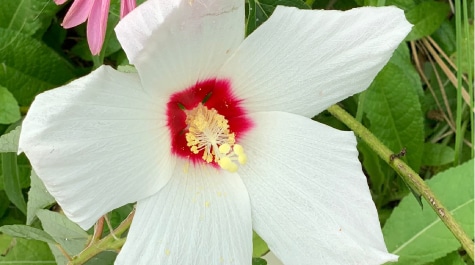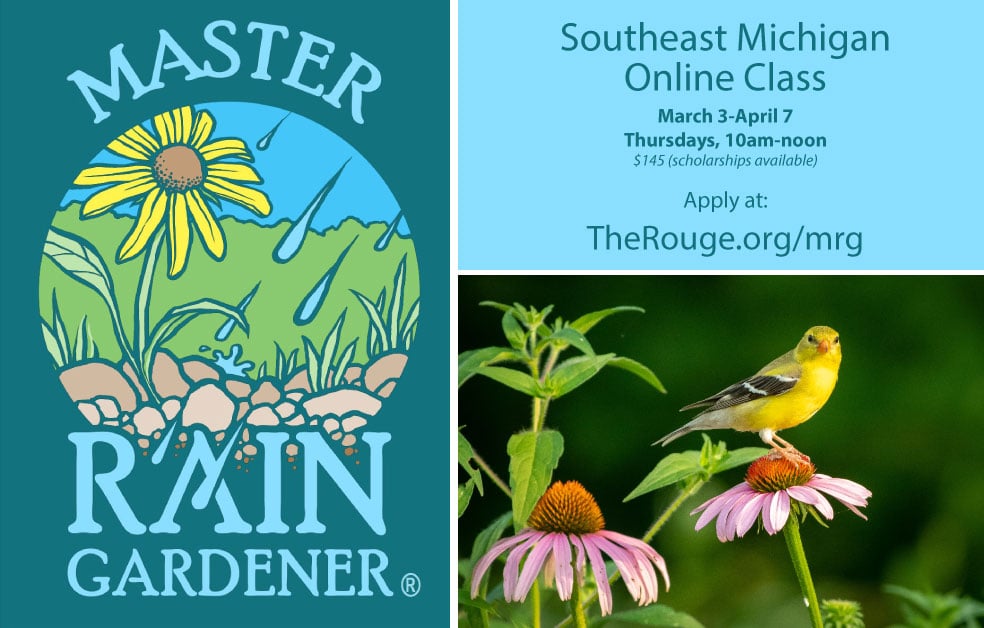Rain gardens are attractive landscaping features designed to catch and slowly soak up rainwater runoff. They also provide natural habitat for many species, including our important pollinator friends.
How rain gardens work

Rain gardens feature depressions in the landscape where rainwater is directed. They are planted with deep-rooted native vegetation, allowing the soil to absorb excess runoff from a house or pavement. Nutrients and pollutants in the water are filtered out by the plants, improving the health of the river system!
What’s so cool about rain gardens?
Rain gardens provide natural ecosystems for native species, help with local drainage issues, and absorb nutrients, pollutants, and sediment out of the water before it gets back to our water bodies, like the Huron River. They even cool water, by absorbing it into groundwater, instead of the rain water running off hot pavement and into nearby creeks through stormdrains. This helps aquatic life by stabilizing the temperature of their habitat.
During most development, natural ecosystems are replaced with impervious (nonporous) surfaces like roofs and pavement. These impervious surfaces do not allow water to seep into the ground as it would typically do in nature.
During a rain event, drops hit these impervious surfaces and quickly flow to the street where they may enter a stormdrain that directs the water into creeks and the Huron River!

The depression in a rain garden can solve excessive puddling issues in your lawn. In many cases, water can also be kept off the sidewalk, which is especially inconvenient—and sometimes slippery— in winter when that water freezes over.
Rain gardens are planted with specific, hearty plants that are designed to sustain the various conditions they encounter in a rain garden. These conditions can include wet soils (in the spring), drought (in the summer), various exposures to the sun, and even salt.
These plants are the heart of the work done and services provided by the garden. They absorb nutrients such as nitrogen and phosphorus from the water and uptake it as food. They also provide a home for important pollinators like hummingbirds and butterflies.
Want to dig in?
We have several opportunities to get involved with rain gardens. You can volunteer to maintain some of HRWC’s past installations with partners. We also have an internship program that includes maintenance on a number of rain garden projects.
 If you are a homeowner and interested in installing your own rain garden, join our rain garden class starting March 1 (deadline to register is February 28th). During this 5-week class, you’ll learn, step by step, how to build your own rain garden! You’ll also have an opportunity to consult with us about your garden design throughout the class.
If you are a homeowner and interested in installing your own rain garden, join our rain garden class starting March 1 (deadline to register is February 28th). During this 5-week class, you’ll learn, step by step, how to build your own rain garden! You’ll also have an opportunity to consult with us about your garden design throughout the class.
Learn more about Rain Gardens and native plants.



